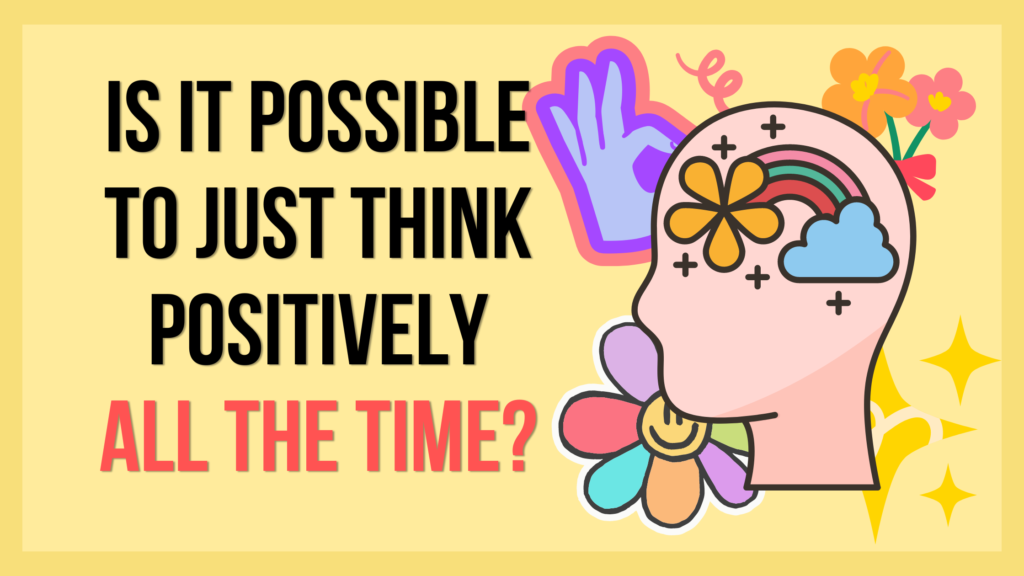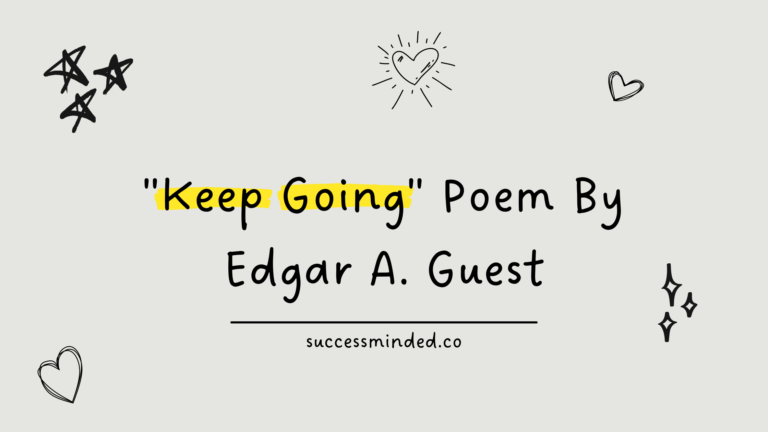The idea of thinking positively all the time certainly sounds appealing. Maintaining an upbeat, optimistic mindset can provide tremendous benefits to your mood, motivation, resilience, and even physical health. Who wouldn’t want to reap those rewards?
However, while positivity is ideal, constant positivity without any negativity is likely unrealistic, unachievable for most, and even potentially harmful if forced. A healthy balance where positivity predominates but negativity still has a place is both more sustainable and emotionally intelligent.

The Appeal of Constant Positivity
It’s understandable why thinking positively all the time seems like an ideal scenario. Our culture frequently praises and encourages optimism, happiness, and positivity. After all, it feels good to feel good! In contrast, chronic negativity tends to be depleting and counterproductive.
Some self-help gurus insist negativity is a choice and advocate that if you simply control your mind, you can maintain unwavering positivity. The belief is that by intentionally shifting negative thought patterns, you can permanently override any tendency towards negativity and its draining effects.
And certainly, intentionally reframing the lens through which you view challenging circumstances or emotions can be beneficial. But does that make constant positivity sustainable or even advisable?
Why Positivity Can’t Be Constant

Here are some key reasons maintaining absolute positivity without any negativity is likely impossible:
- Negativity is part of the normal human emotional spectrum. Never experiencing negative emotions is unrealistic.
- Forcibly suppressing all negativity can lead to repression and heighten anxiety, depression, guilt, and shame.
- Trying to force positivity when you aren’t authentically feeling positive backfires. Positivity must come from an honest place to have benefits.
- Reframing every single negative thought would take tremendous mental effort and energy. It’s impractical long-term.
- Negative emotions can provide useful signals about problems that need addressing in your life. They shouldn’t always be suppressed.
- Toxic positivity stems from insisting on positivity even when it invalidates very real suffering or stressful circumstances someone is enduring.
The ups and downs of life make constant positivity an unrealistic expectation. The keys are balancing positivity with necessary and natural negativity – and avoiding the toxicity of forced positivity.
Striking a Realistic Balance
Rather than demanding constant positivity, a healthy, sustainable goal is predominant positivity balanced with managed negativity when useful. This involves:
- Accepting negativity will arise at times. Don’t criticize or exacerbate it.
- Reframing excessive negative thought patterns, not necessarily passing negative emotions. Process don’t repress.
- Using negative emotions judiciously as signals to identify issues needing attention or adjustment.
- Maintaining perspective during hard times. Don’t invalidate your struggles by forcing positivity.
- Developing healthy coping mechanisms for constructively processing negative emotions when they arise.
With self-awareness and emotional intelligence, positivity can flourish as your dominant state without complete repression of negativity when appropriate.
The Dangers of Toxic Positivity

When taken too far, forced positivity becomes toxic positivity. Signs of insisting on positivity in unhealthy ways include:
- Repressing all emotions deemed negative, which can heighten anxiety, depression, shame, and guilt.
- Blaming people for negativity as a character flaw versus circumstances.
- Minimizing serious problems or pains by trumpeting optimism and positivity regardless of the truth.
- Encouraging false positivity and denial versus proactive change.
- Straining relationships by forcefully imposing positive mindset expectations.
- Causing self-esteem issues when unable to meet unrealistic positivity standards.
Toxic positivity stems from overzealous insistence on constant positivity. It denies reality and dismisses legitimate hardships. Be aware of its unhealthy effects.
Final Thoughts
In summary, true sustainable positivity must come authentically. Shooting for predominant positivity balanced with mindful processing and leveraging negativity when appropriate is the healthiest approach, both mentally and emotionally. With self-awareness, conscious effort, and compassion, a positive lens can be cultivated without toxicity or repression.




Pingback: One Day or Day One? You Decide. – Success Minded
Pingback: Look for Something Positive in Each Day, Even When You Have to Look a Little Harder – Success Minded
Pingback: Focus on the Good and the Good Gets Better – Success Minded
Pingback: What is Self-Confidence, and Why is it So Important? – Success Minded